Mourning Dove vs Pigeon: What’s the Difference?
Updated: Feb. 22, 2024
The pigeon and mourning dove are from the same family, but these stout, short-beaked birds are different in both subtle and obvious ways.
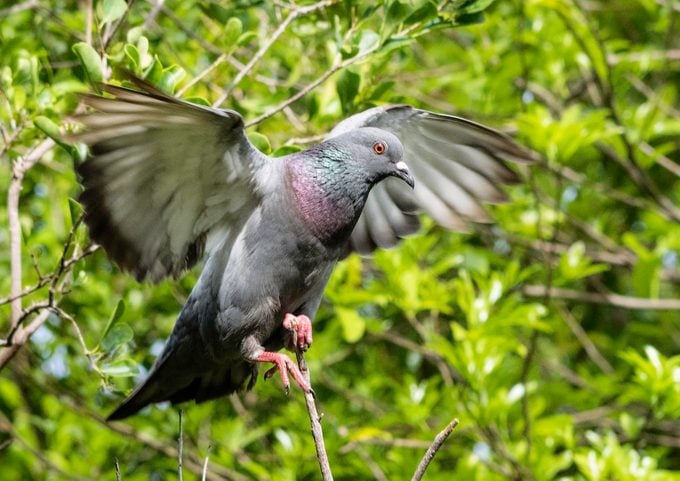
Pigeons and mourning doves are similar in many respects—stout bodies, head-bobbing gaits, and the familiar low-pitched cooing calls. It makes sense given they are members of the same family, Columbidae, which consists of more than 300 species. At least 11 types of doves and pigeons call the U.S. home, with pigeons being larger in size. But there are other differences, too, including coloring, diet, and habitat, between a mourning dove vs a pigeon.
Enjoy 25 breathtaking mourning dove pictures.
On This Page
Mourning Dove vs Pigeon: Consider Habitat
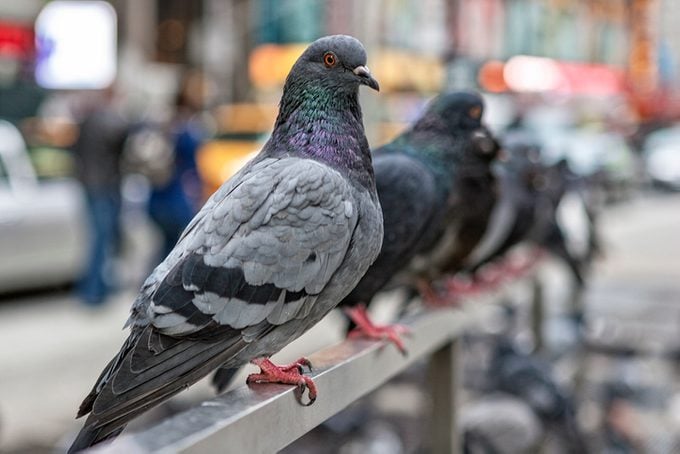
Pigeons are the wild ancestors of rock doves, and originated in Europe, North Africa and western Asia. They were domesticated in Europe and brought to the United States where they eventually escaped and thrived.
Today, these birds are common sights in towns and cities featuring tall buildings with ledges and fire escapes that replicate the seaside cliffs of the birds’ ancestral lands. Unofficial estimates of the pigeon population in New York City start around 1 million! Pigeons are less often found in suburbs, and on farms and rocky cliffs.
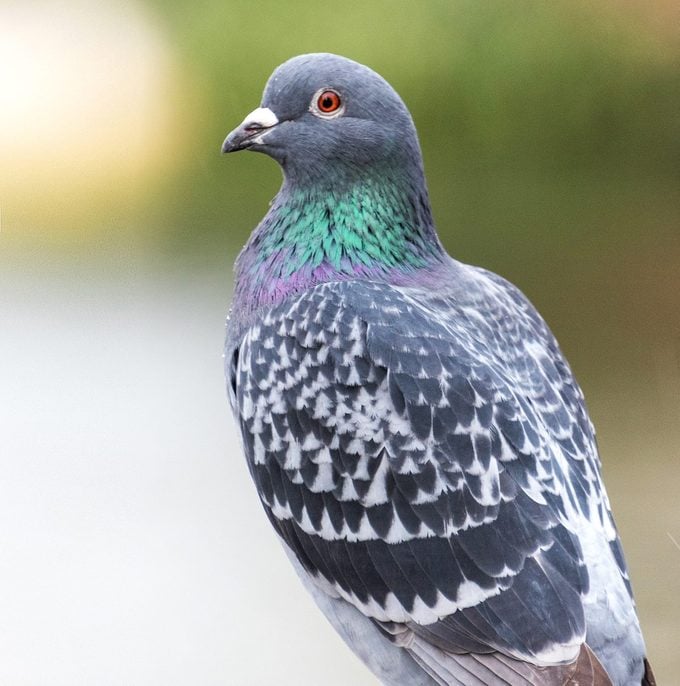
Mourning doves are native to North America, and are found as far south as Central America. Mourning doves prefer farmland with scattered trees and shrubs, woodland edges and suburban gardens, but are also found in prairies and deserts. They are a familiar presence foraging on the ground beneath hanging feeders in suburbia.
Mystery solved: Here’s why you never see a baby pigeon.
Differences in Color and Tail Length
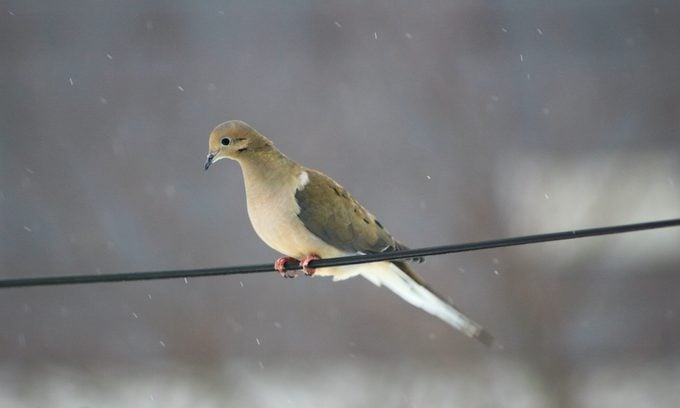
Mourning doves and pigeons have round heads, short necks, and short thin beaks. Compared to mourning doves, pigeons are larger and stubbier with shorter, straighter tails. Mourning dove tails are longer and tapered. Birders can identify mourning doves in flight by flashes of white on the tips of their fan-shaped tails.
When it comes to coloration, the differences between a mourning dove vs pigeon are apparent. Mourning doves are tan overall with some gray coloring, and black spots on their wings. They also have pastel blue skin encircling their eyes. Pigeons have a variety of colorations, including iridescent feathers on their necks, two black bars in the wing, a gray back, and a blue-gray head.
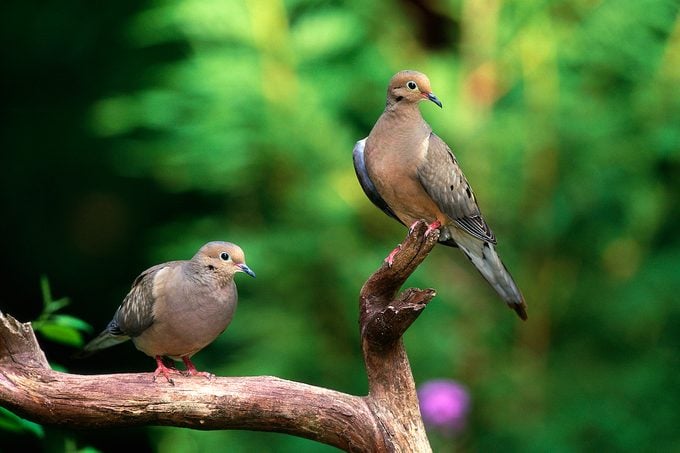
Both pigeons and mourning doves are fast, strong flyers. According to Encyclopedia Britannica, some racing pigeons have reached speeds over 90 miles per hour. This is much faster than mourning doves, whose speed has been timed up to 55 mph.
Do mourning dove feathers and wings make noise?
Differences in Diet
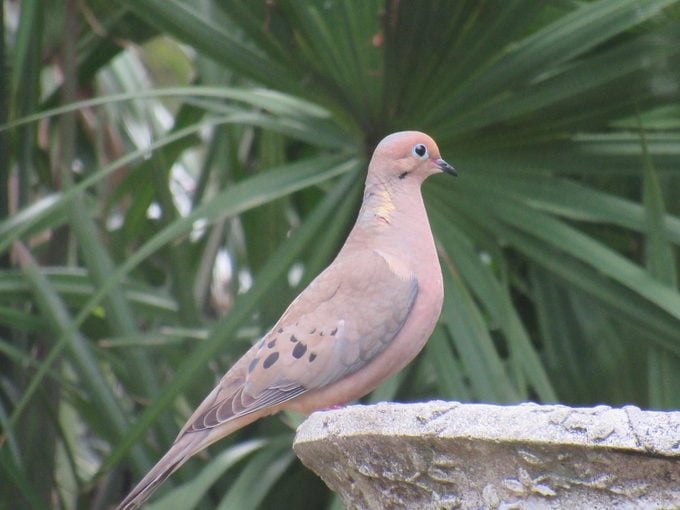
Pigeons and mourning doves move in flocks, and forage mostly on the ground. Lacking large seed-cracking bills, these birds feed on smaller seeds from grasses and ragweeds. They also eat cultivated grains such as millet and corn, as well as berries and other small fruits. Less often they’ll eat insects and crustaceans such as snails.
Mourning doves feed almost entirely on seeds, and can be attracted with a platform feeder containing millet, black oil sunflower seeds, nyjer, and cracked corn.
Pigeons, on the other hand, eat a greater variety of food, including human food. Many cities discourage feeding pigeons because it creates unnaturally large pigeon populations, and can cause disease outbreaks in other wild birds.
Next, learn about mourning dove nests and the average mourning dove lifespan.
Additional reporting by Kaitlin Stainbrook
Sources
- Museum of the City of New York
- Encyclopedia Britannica
- Sierra, the Magazine of the Sierra Club, “Welcome to New York City’s Pigeon Hospital“
- National Audubon Society Bird Guide – Pigeons and Doves
Why Trust Us?
For nearly 30 years, Birds & Blooms, a Trusted Media Brand, has been inspiring readers to have a lifelong love of birding, gardening and nature. We are the #1 bird and garden magazine in North America and a trusted online resource for over 15 million outdoor enthusiasts annually. Our library of thousands of informative articles and how-tos has been written by trusted journalists and fact-checked by bird and garden experts for accuracy. In addition to our staff of experienced gardeners and bird-watchers, we hire individuals who have years of education and hands-on experience with birding, bird feeding, gardening, butterflies, bugs and more. Learn more about Birds & Blooms, our field editor program, and our submission guidelines.






















